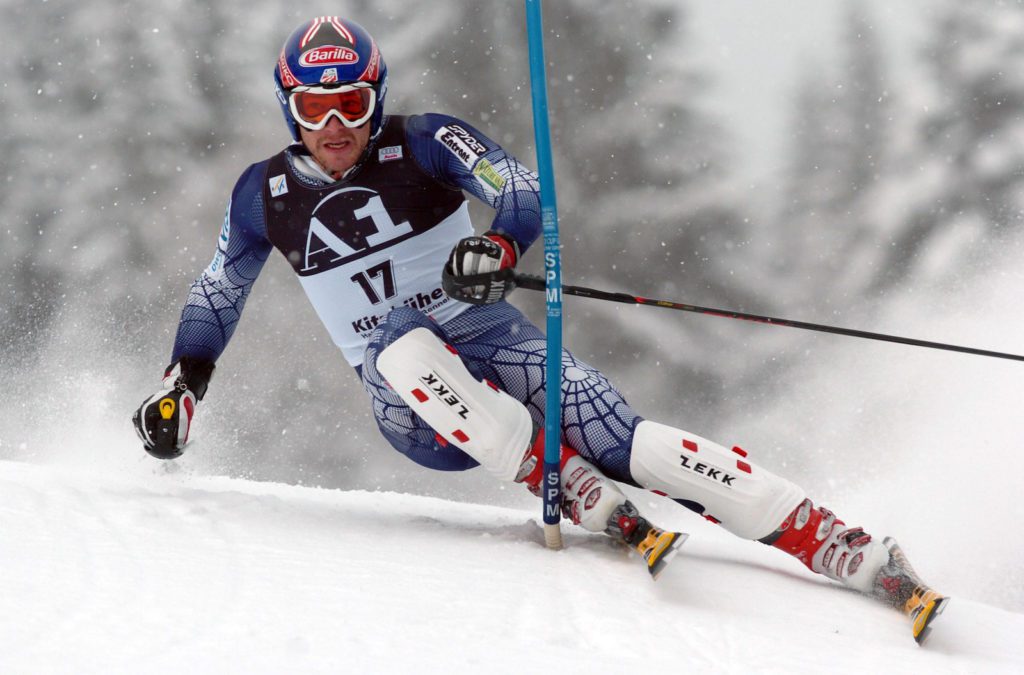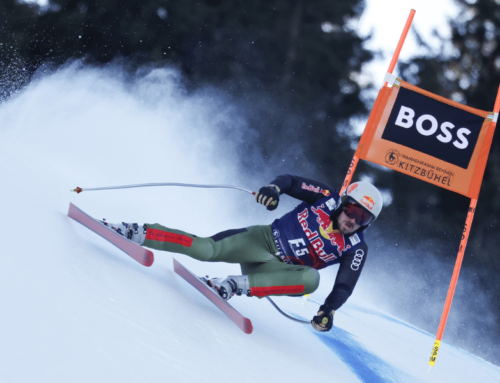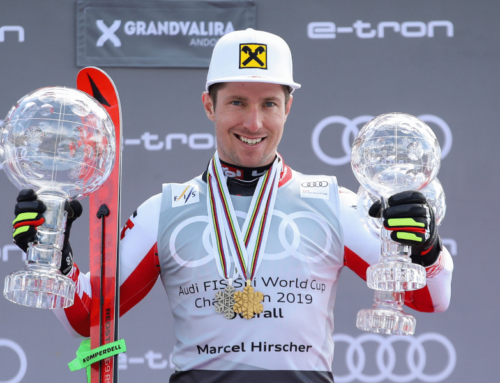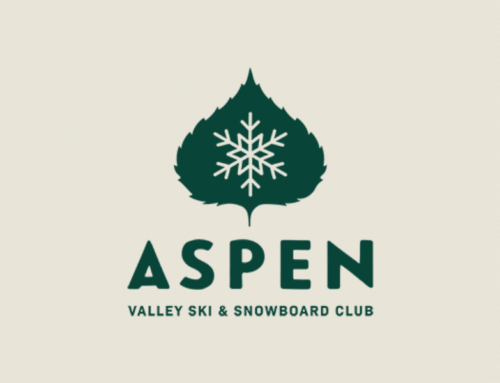Can the alpine combined be saved?
This story originally ran on Sept. 28, 2021.
Noticeably absent from this year’s World Cup calendar, lost among 75 men’s and women’s races, is the alpine combined, leaving many perplexed about the future of the historic event. For ski racing purists, it is an alarming omission.
FIS men’s race director Markus Waldner said efforts were made to accommodate the discipline – which combines one run of downhill or super G along with slalom – but ultimately details could not be worked out.
“We checked all options for this year’s calendar – no solution was found for TV technical or financial reasons,” Waldner told Austrian ORF television. The Italian race director also said that venues in consideration were Wengen for the men and Zauchensee for women.
The combined event or combination, which made its Olympic debut at the 1936 Garmisch-Partenkirchen Winter Games and was later resurrected for Calgary 1988 after a 40-year absence, remains on the Olympic program in Beijing for both men and women in February. However, if the event does not return to the World Cup calendar over subsequent seasons, its Olympic status will also be doomed.

Croatian Ivica Kostelic embraced the event, having raced to three consecutive Olympic combined silver medals between Turin 2006 and Sochi 2014. His sister, Janica, won back-to-back combined gold medals at Salt Lake City 2002 and Turin 2006.
Never one to hold back an opinion about something, Ivica unsurprisingly is not pleased about the latest snub of the sport’s historical event.
“I’m trying not to get too fired up with my emotions, but trying to get into a discussion with people who are a priori against the combined is a lost case,” Kostelic tells Ski Racing Media, on a call from his Croatian home. “We hear the same arguments all the time about why the combined should not be there, the times of the combined are over. These are very weak arguments – they don’t stand.
“When you are discussing the combined with anybody from the FIS, they will say it’s the TV, the sponsors, whatever. It’s like a tape that has been prepared for the question,” he said.
Kostelic, a three-time World Cup combined champion between 2011 and 2013, obviously recognizes the cause of the problem. But he also offers solutions, not just to save the event, but also what he believes is the integrity of the sport.
“To be a combined skier, you have to train speed and tech, downhill and slalom, as there are the two sides of the spectrum. You have to more or less train your weaker discipline, which for the tech skiers is risky as it takes away the focus of your tech training, for downhill skiers it’s the same,” the Croatian says.
“The prize is basically non-existent because over recent years we’ve only had one or two combines and it is completely understandable that no one is going to train twice as much for just one race in the season.
“The situation would be completely the opposite, if let’s say, we had 10 combines and then everybody would have to train it,” says Kostelic, who accumulated nine World Cup victories, among his 26 in total, in either combined or super combined. “If you want to make it more spectacular for TV, you have to make more races.”
Apparently, parallel and mixed team events, which are arguably more TV friendly, have become a greater priority for the FIS over recent seasons.

“The way things are going in the last 10 years, it’s a way towards erasing the combined and let’s say the substitute would be the parallel races, which of course doesn’t make any sense,” Kostelic says, the intensity of his voice increasing. “This is how the FIS is representing this move – taking away the combined and implementing the parallel races.
“Unfortunately, the interest of sport sometimes collides with the interest of TV and sponsors,” says the 41-year-old retired Croatian skier. “Sometimes you have to protect the integrity of the sport.”
Kostelic won his lone overall World Cup title in 2010-11 with 345 (23.5%) of his 1123 points coming in combined events. If not for those points, the title would have come down to the wire with him squeaking past runner-up Didier Cuche by just five points.
Julia Mancuso won two of her four Olympic medals in the super combined, demonstrating her versatility, winning silver in Vancouver 2010 and bronze at Sochi 2014.

“It’s a difficult event because it has become heavily weighted towards the tech skiers – of course, it’s one of my favorite events because you have to be a well-rounded skier to be able to conquer the speed and tech disciplines,” Mancuso says.
“We didn’t have many combines when I was competing, and when I first started, we didn’t have any that were just purely combines – you’d have to enter the slalom race after the downhill and they’d just combine it, but it was a really big deal when it came to the Olympics.”
The storied history of the Kitzbuehel combination
In Kitzbuehel, the combination had been awarded – along with downhill and slalom – ever since the debut of the Hahnenkamm races in 1931. Traditionally, the true Hahnenkamm champion had been calculated and determined by the racer with the best combined time between the downhill on the Streif and two runs of slalom. Great Britain’s Gordon N. Cleaver was the first Hahnenkamm combined champion in 1931, while one year later, Austrian Rini Andretta became the inaugural women’s winner.

Kitzbuehel combination winners have included a lengthy list of the sport’s greatest champions: Christian Pravda, Anderl Molterer, Toni Sailer, Egon Zimmerman, Jean-Claude Killy, Karl Schranz, Kjetil Andre Aamodt, Bode Miller, Kostelic, as the lone consecutive four-time winner, and Alexis Pinturault, who won three straight between 2014-2016. The French overall World Cup champion’s 2016 victory, sadly, was the last time the event was contested on the venerable Austrian racecourses.
Kostelic, a history buff who often quoted American presidents and other historical figures during news conferences over his 17 seasons on tour, exhibits a genuine respect and appreciation for the event’s roots and rich history.
“With the combined, you’re building a tradition that lasts nearly a century,” Kostelic says. “Nothing is harder than to build a tradition because the tradition demands time and we don’t have time.
“What I really like about the Americans is, we can follow the NFL and a guy pulls out a statistic from 1952 and we’re comparing that guy to those today, and this is a tradition. The Americans are very keen on tradition because in a way, they are a new civilization being detached from Europe. They understand that building a tradition is very important.
“Now we have a tradition of 100 years of racing in a discipline and we want to get rid of that – why do we want that?” Kostelic asks rhetorically.
Kostelic says the combination is the purest form of the sport.
“Alpine combined: it’s the essence of alpine skiing with downhill and slalom – it’s the top challenge for any skier,” he says. “When you ask the older guys from Killy to Schranz, they will tell you the same thing – the combined is the event that tests the skier.”
In 2019-20, Pinturault and Federica Brignone raised combined crystal globes, tallying points in just three and two races, respectively. The Frenchman and Italian could conceivably go down in ski racing’s record books as the last season-title winners, as the future of the event appears to be in jeopardy.
Follow Brian on Twitter – @Brian_Pinelli





















